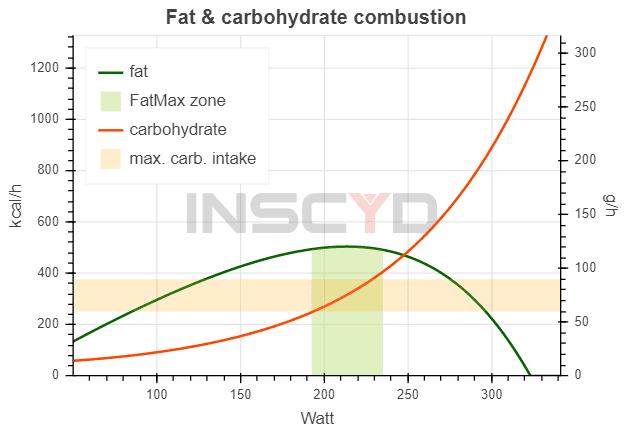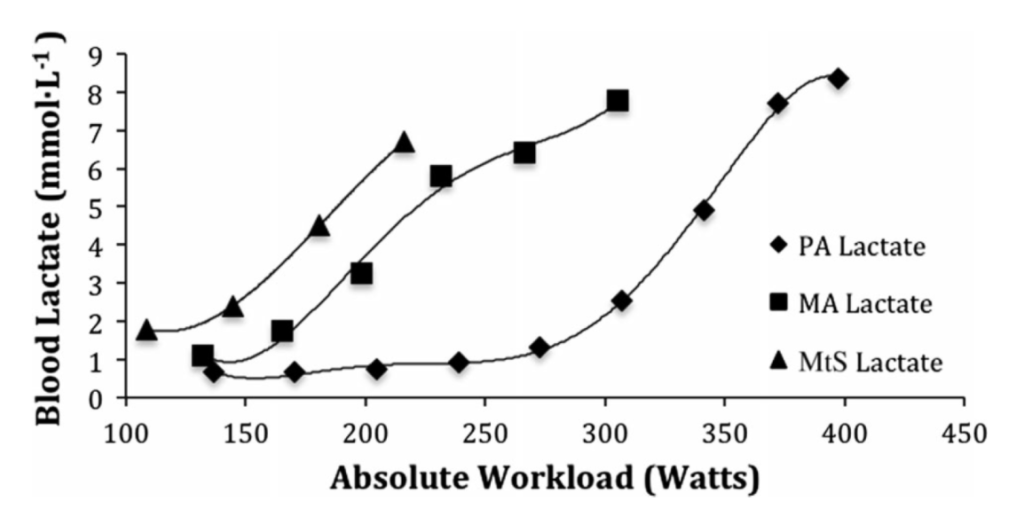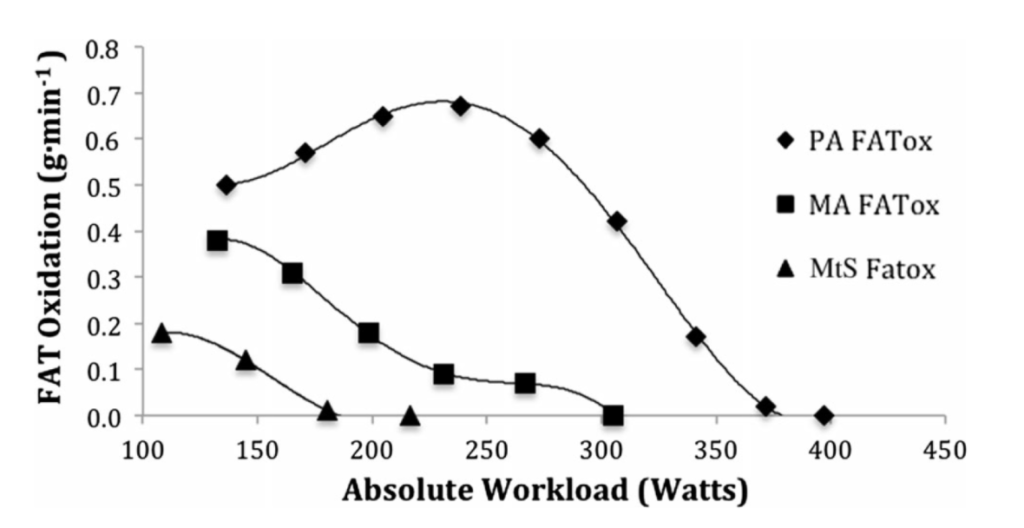- Defining Zone 2 and how to find the right intensity to improve mitochondrial function.
- Defining FatMax, how it’s measured and how to use it to increase training efficiency.
- Using blood lactate to define Zone 2 and how different types of athletes respond to training.
- Making an optimal Zone 2 training plan and using compounding benefits.
- VO2 max and high intensity training together with Zone 2 training and its impact on longevity.
Deep dive back into Zone 2 Training
Deep dive back into Zone 2 Training

- Do a VO2 Max or FatMax test to define your training zones. Train in the fat max zone to burn the maximum amount of fat and stimulate mitochondrial function.
- Test your maximum heart rate and train at 70-80% of that for Zone 2. Make adjustments if your rate of perceived exertion is too high/low. You should barely be able to hold a conversation.
- If you’re training at a defined wattage, but are having trouble getting your heart rate up, you might not be recovered well. Take some rest and reload on carbohydrates.
- Aim for at least 2 1-hour sessions per week to maintain mitochondrial function, to improve 4-5 sessions of 1-1.5 hours are ideal.
- Add 5 minutes of high intensity training (Zone 5) to the end of your Zone 2 sessions to stimulate the glycolytic system.
- It’s never too late to start. Even at an older age you can still improve your health significantly with consistent Zone 2 training.
What is Zone 2?
Zone 2 is the exercise intensity that stimulates mitochondrial function and fat oxidation the most. Zone 2 training mainly recruits type 1 muscle fibers and mobilizes the highest amount of fat from lipolysis and from fat oxidation from inside the mitochondria. This is where fat and glucose are burned inside the mitochondria. Both fat and lactate are being used as fuel by the cells. Fat is oxidized in the mitochondria to produce energy by MCTs (monocarboxylate transporters) moving the lactate from the cytoplasm into the mitochondria. This process is stimulated by Zone 2 training. Zone 2 training is the best training intensity for stimulating mitochondrial function, fat oxidation and lactate cleanse capacity.
| Properties | Type I fibers | Type IIA fibers | Type IIX fibers |
| Motor Unit Type | Slow Oxidative (SO) | Fast Oxidative/Glycolytic (FOG) | Fast Glycolytic (FG) |
| Twitch speed | Slow | Fast | Fast |
| Twitch force | Small | Medium | Large |
| Resistance to fatigue | High | High | Low |
| Glycogen content | Low | High | High |
| Capillary supply | Rich | Rich | Poor |
| Capillary density | High | Intermediate | Low |
| Myoglobin | High | High | Low |
| Red color | Dark | Dark | Pale |
| Mitochondrial density | High | High | Low |
| Oxidative enzyme capacity | High | Intermediate-high | Low |
| Z-line width | Intermediate | Wide | Narrow |
| Alkaline ATPase activity | Low | High | High |
| Acidic ATPase activity | High | Medium-high | Low |
Source: https://en.wikipedia.org/wiki/Skeletal_muscle#Fiber_types
What is fat max?
Fat max is the level of exercise at which the most amount of fat is oxidized. If the exercise intensity increases or decreases, fat oxidation will start to decrease. This is the ideal level for steady-state cardio training.

Source: https://inscyd.com/whitepaper/fatmax2018/
How is fat max measured?
Fat max is measured using an indirect calorimeter. The test subject wears a mask over their mouth and nose. Using sensors the amount of oxygen (O2) consumed and the amount of carbon dioxide (CO2) produced is measured. The test subject then uses an ergometer (bike, rower or treadmill) and intensity is slowly increased. As intensity increases, VO2 (the volume of O2 consumed) and VCO2 (volume of CO2 produced) both increase. The ratio of the two values will show how much energy is being made from fat oxidation and how much of it is glycolytic.
As intensity increases, more oxygen is needed (VO2 increases) and then more carbon dioxide is produced (VCO2 increases). In a more lipolytic state (fat oxidation state) oxygen is being consumed but not as much carbon dioxide is produced. In a glycolytic state (at higher intensity), type II muscle fibers are recruited and more oxygen is consumed as well as more carbon dioxide produced.
Blood Lactate
The blood lactate level can also be used to define Zone 2. As workload in watts increases, blood lactate increases. In general a blood lactate level of about 2 mmol is used as a marker for Zone 2. Increasing blood lactate above 2 mmol is associated with moving out of Zone 2 and into Zone 3.
The following two charts show Watts vs. blood lactate level and Watts vs Fat oxidation in three different types of people. Professional athletes (PA), moderately active individuals (MA), and individuals with metabolic syndrome (MtS). Comparing the two charts shows that fat max is reached before the threshold of 2 mmol is reached suggesting that the ideal Zone 2 training might be at a lower level than 2 mmol.
Figure 2 shows that individuals with metabolic syndrome reach Zone 2 lactate level at a resting state. Any amount of workload will move them out of Zone 2. Whereas professional athletes require a workload of around 300 watts to be in Zone 2.

Source: https://pubmed.ncbi.nlm.nih.gov/28623613/
Figure 3 shows that a professional athletes’ fat oxidation first increases as workload increases, whereas moderately active individuals and those with metabolic syndrome begin at their maximum fat oxidation and experience a decrease as workload increases. Note that the fitter an individual gets, the more fat they will be able to burn (higher capacity for fat oxidation).

Source: https://pubmed.ncbi.nlm.nih.gov/28623613/
To improve metabolic function and maximize mitochondrial performance figure 2 suggests a workload of 175 watts (2 mmol/L) but figure 3 suggests a workload of 125 watts (Fat max). If no FatMax test is done, ideally a moderately active individual should train somewhere in the middle of those two values (150 watts) for Zone 2 training.
How to train in Zone 2
Metrics for finding Zone 2
One way to determine Zone 2 is by doing a VO2 max or a FatMax test to find the subjects fat oxidation. Alternatively, one could use a lactate meter during training. If these tests are not possible, then one can train based on the rating of perceived exertion (RPE). Zone 2 is defined as training at a level where it’s possible to carry on a conversation but it feels a bit strained. Increasing intensity any further would lead to the individual not being able to carry on a conversation. Further, heart rate is a good guide. Once maximum heart rate has been determined through training, Zone 2 is defined as 70-80% of the maximum heart rate. From here adjustments can be made based on the rate of perceived exertion (RPE). When training at the usual Zone 2 intensity, but the heart rate does not go up to the usual range, this could be an indication that the individual has not recovered fully. In this case it can make sense to reduce training and increase carbohydrate intake to improve recovery.
Optimal Zone 2 training
Only doing high intensity and/or weight training, without steady-state cardio, means that mitochondrial function is not being trained. Only training Zone 2 once per week for one hour will likely lead to deteriorating mitochondrial function with age. Therefore, at least 2 sessions per week of 1-1.5 hours should be performed to maintain mitochondrial function. In order to improve mitochondrial function, 3 sessions per week of Zone 2 training will be required. 1-1.5 hours per session on 4-5 days per week are ideal. For unfit individuals 20 minutes per session 3-4 times per week is a starting point with the goal of building up to a full hour or more. Splitting up the training into 4 1-hour sessions is better than training once per week for 4 hours.
Compounding benefits of Zone 2
Zone 2 training can be thought of in a similar way as accumulating wealth. There will only be small improvements, but over many years the improvements compound. This is why a 40-year-old overweight smoker can become a world champion cyclist at age 80. Training Zone 2 consistently can help older individuals have the metabolic parameters of someone much younger. We used to think that after age forty health decreases, but with the right training it can be improved significantly.
How to incorporate high intensity training (Zone 5)
Peter Attia’s 4 pillars of exercise:
- Stability
- Strength
- Low-end aerobic exercise to improve mitochondrial efficiency (Zone 2)
- High-end aerobic exercise for peak aerobic and anaerobic performance (Zone 5)
VO2 max training is highly correlated with longevity, more so than most other variables. The VO2 max level does not need to be very high to have an effect on longevity. However, being in the top 2.5-2.7% of the population of a certain age group carries a 5x reduction in risk compared to the bottom 25% of the same population.
If one has time to do more than 4 Zone 2 training sessions in a week, then it is preferable to do a VO2 max training instead of another Zone 2 session.
4×4 protocol recommended by Peter Attia:
- 10 minute warmup
- 4 minutes of the highest intensity you can sustain for this amount of time
- Followed by 4 minutes of recovery
- Repeat high intensity / recovery cycle 4-6 times
- 10 minute cool down
Alternatively, 5 minutes of high intensity interval can be added to the end of a Zone 2 training session. This also helps increase VO2 max and does not require additional training sessions. The high intensity interval does not blunt the Zone 2 training done before as it’s performed at the end. The high intensity interval should not be done at the beginning or the middle of the Zone 2 training.
The adaptation of the mitochondrial function through Zone 2 training takes months or even years. On the other hand, increasing the glycolytic system through high intensity training can occur within a few weeks.



